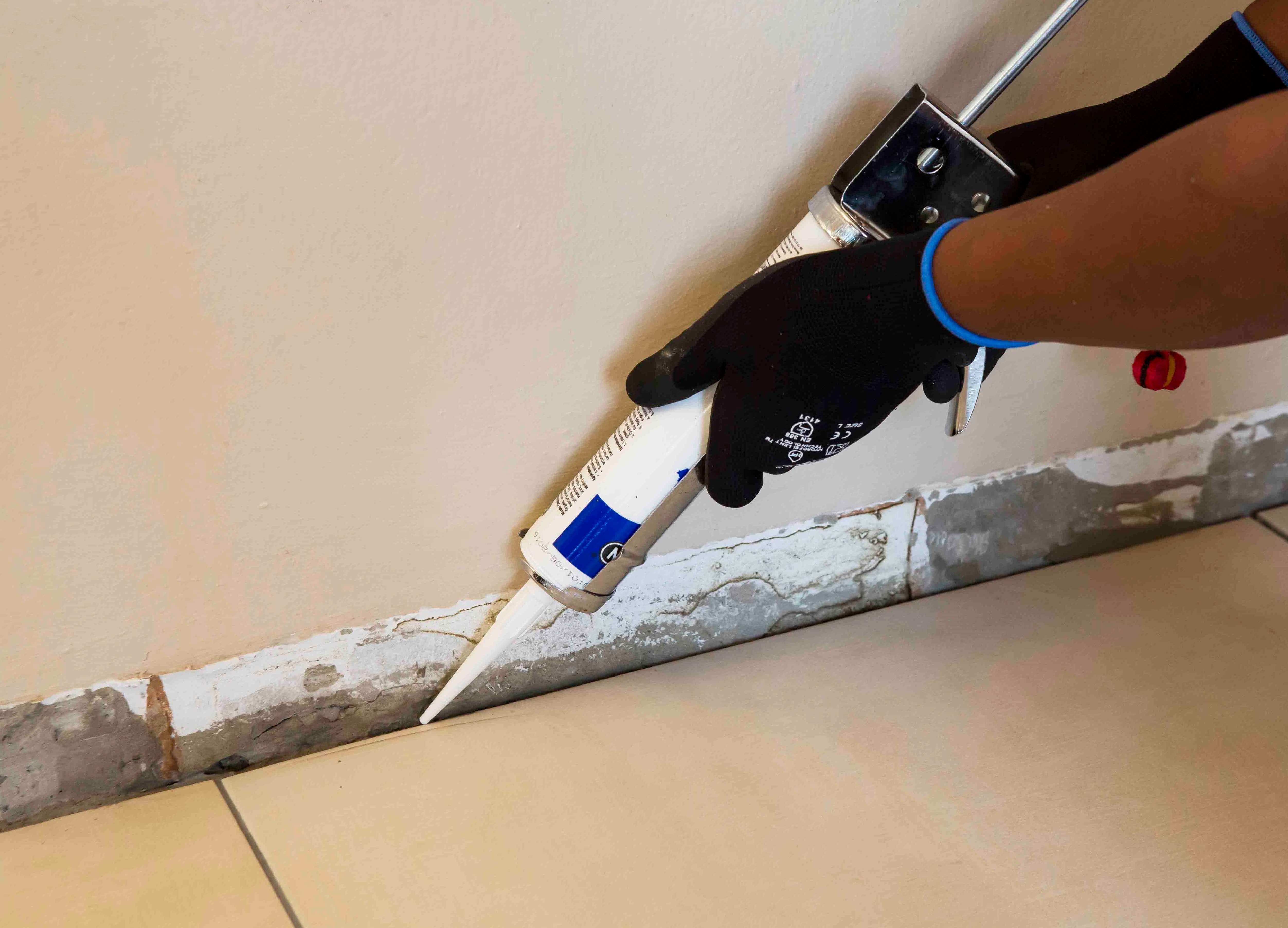How to get your bathroom ready for visitors: tile & grout refreshment tips
Before April, with a couple of weeks of school holidays and many public holidays it is an ideal time to start working those little broken, chipped and cracked tiles or grout refreshment you’ve been meaning to get to.
Replacing broken or cracked tiles
Replacing cracked or broken tiles is fairly straightforward and doesn’t require much in the way of tools – in fact, this will only take a
Step 1: Remove the grout from around the tile with a Tilemate grout rake. Run the blade back and forth in the middle of the grout joint and eventually you will wear away a line of grout all the way to the substrate. Scrape gently as using too much force may knock the tiles loose. Cover the adjacent, undamaged tiles with newspaper so that they don’t chip or crack.
Step 2: Now that you’ve cut a clean line all the way around the affected tile, carefully break it with a hammer, removing the fragments with a chisel. Also clear away any adhesive that remains on the substrate.
Step 3: Carefully remove remaining grout attached to the sides of the adjacent tiles with a small chisel and hammer. Tap the chisel gently with the hammer to avoid chipping or breaking the edges of the surrounding tiles.
Step 4: Replace the tile, using TAL’s rapid setting adhesives which will allow you to walk on the new installation soon after the damaged tiles are replaced. Mix the indicated amount of adhesive (according to the instructions) and press the tile firmly into place.
Step 5: Once the adhesive has set, clear the joints of any adhesive residues and apply grout into the joints with a grout squeegee. Allow the grout to set for 2-3 hours (see grout packaging for instructions) and remove the excess from the tiles with a damp grout sponge.
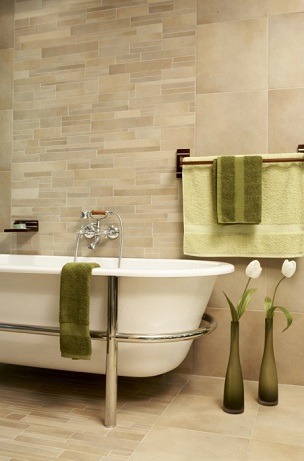

Refreshing tile grout
If your tile grout just needs to be refreshed, there are a number of options to pursue. Depending on the state of the grout, you can use specially formulated cleaning agents which clean old and dirty grout or use a grout pen or scrape out the existing grout with a Tilemate grout rake and regrout the joints.
How to choose the right grout and apply it:
- Where possible, avoid using white or light coloured grout for floor applications as this type of grout tends to discolour over a period of time and dirt accumulates in the grout joints, showing up more against light coloured grout as opposed to darker coloured.
- Read the packaging instructions before grouting. Important information regarding water to powder mix ratios, application steps, drying time and cleaning are included in these instructions and will ensure a long-lasting application.
- Work carefully to ensure that you don’t scratch the tile’s surface when you apply cement based grout to soft glazed tiles, highly polished tiles or glass tiles.
- Test some grout on a sample tile to ensure that there is no staining caused by the grout being absorbed through the glaze or into the tile body.
- When applying TAL Wall & Floor Grout to high-traffic areas, such as the kitchen, passage and entrance hall as well as wet or exposed areas, replace the water in the mix with TAL Bond, a latex additive, to improve water resistance and flexibility. This will also deepen the colour of the grout.
- Use TAL Goldstar Grout Sealer to seal the top layer of the grout and minimise grout discolouration.
couple of hours out of your day to complete.
- You will need the following: replacement tile, grout rake, small chisel, hammer, grout, tile adhesive, grout squeegee and a grout sponge.
- Be sure to keep all tools and materials away from children and also wear goggles when breaking broken tiles.
Step 1: Remove the grout from around the tile with a Tilemate grout rake. Run the blade back and forth in the middle of the grout joint and eventually you will wear away a line of grout all the way to the substrate. Scrape gently as using too much force may knock the tiles loose. Cover the adjacent, undamaged tiles with newspaper so that they don’t chip or crack.
Step 2: Now that you’ve cut a clean line all the way around the affected tile, carefully break it with a hammer, removing the fragments with a chisel. Also clear away any adhesive that remains on the substrate.
Step 3: Carefully remove remaining grout attached to the sides of the adjacent tiles with a small chisel and hammer. Tap the chisel gently with the hammer to avoid chipping or breaking the edges of the surrounding tiles.
Step 4: Replace the tile, using TAL’s rapid setting adhesives which will allow you to walk on the new installation soon after the damaged tiles are replaced. Mix the indicated amount of adhesive (according to the instructions) and press the tile firmly into place.
Step 5: Once the adhesive has set, clear the joints of any adhesive residues and apply grout into the joints with a grout squeegee. Allow the grout to set for 2-3 hours (see grout packaging for instructions) and remove the excess from the tiles with a damp grout sponge.
Refreshing tile grout
If your tile grout just needs to be refreshed, there are a number of options to pursue. Depending on the state of the grout, you can use specially formulated cleaning agents which clean old and dirty grout or use a grout pen or scrape out the existing grout with a Tilemate grout rake and regrout the joints.
How to choose the right grout and apply it:
- Where possible, avoid using white or light coloured grout for floor applications as this type of grout tends to discolour over a period of time and dirt accumulates in the grout joints, showing up more against light coloured grout as opposed to darker coloured.
- Read the packaging instructions before grouting. Important information regarding water to powder mix ratios, application steps, drying time and cleaning are included in these instructions and will ensure a long-lasting application.
- Work carefully to ensure that you don’t scratch the tile’s surface when you apply cement based grout to soft glazed tiles, highly polished tiles or glass tiles.
- Test some grout on a sample tile to ensure that there is no staining caused by the grout being absorbed through the glaze or into the tile body.
- When applying TAL Wall & Floor Grout to high-traffic areas, such as the kitchen, passage and entrance hall as well as wet or exposed areas, replace the water in the mix with TAL Bond, a latex additive, to improve water resistance and flexibility. This will also deepen the colour of the grout.
- Use TAL Goldstar Grout Sealer to seal the top layer of the grout and minimise grout discolouration.
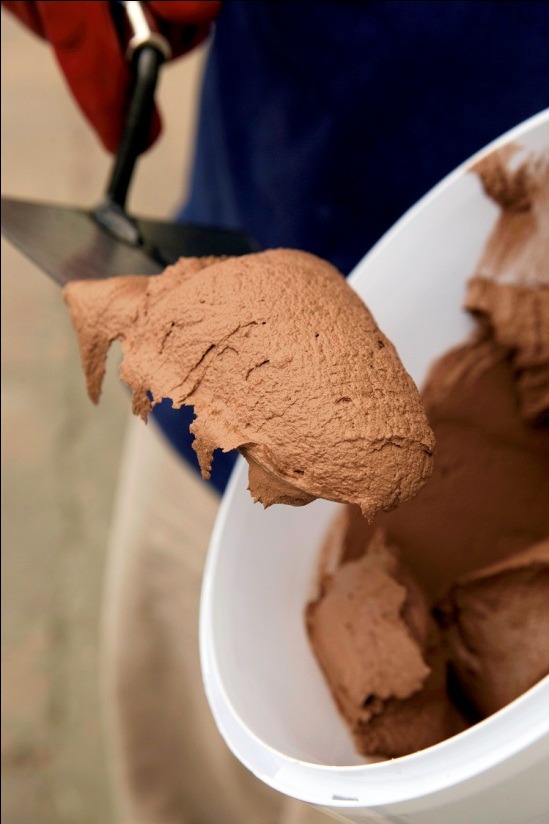

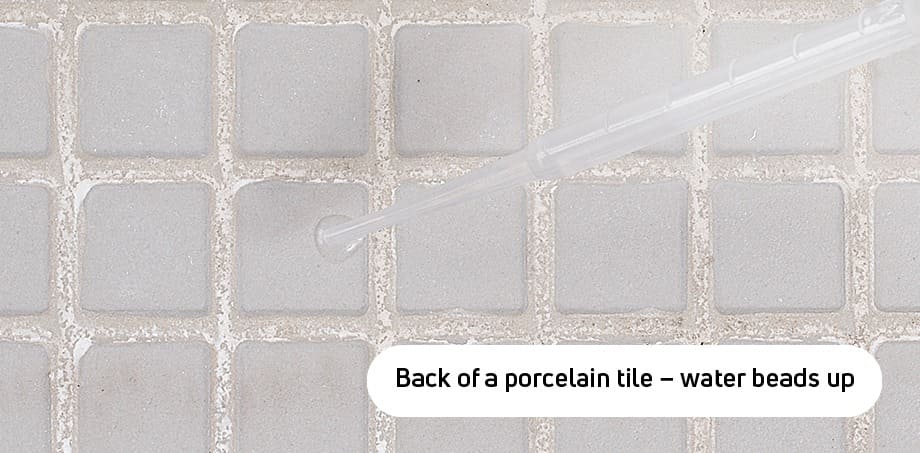

Grout installation tips
- Follow the instructions on the grout packaging for the correct mix ratio.
- Add the grout to the stipulated amount
of clean, cool water whilst mixing. Too much water in the mix can
cause colour variations in the grout
joints (patching of colour) and can also result in a soft, powdery finish. - Mix it well to form a creamy, lump-free consistency.
- If using TAL Wall & Floor Grout, add 5kg of grout to 1.5 litres of
clean, cool water. - Note that all exterior/exposed and ‘wet’ applications require the water
in the mix to be replaced with TAL Bond,
a latex additive that improves the water resistance,
flexibility and bond strength of the grout. Alternatively, TAL Bond Powder may be added to the adhesive mixing water, at a ratio of 1 x 1kg sachet per 20kg tile adhesive. - When applying the grout, ensure that the tiles are dry and free of dust.
- The joints must be raked out and
cleaned before grouting. - Apply the grout with a grout squeegee, one square metre at a time.
- Work the grout into the tile joints. Note that it is important to fill
the joints completely and to compact the grout into the joints so
that there are no voids (air pockets). - Wipe off excess grout from the face of the tiles and smooth the
surface of the grout with the squeegee.
It is important to clean off excess grout from the face of the tiles with a damp grouting sponge before it hardens completely. Rinse the sponge frequently in clean water to get rid of the grout, but remember to use a damp, not wet, sponge. If the sponge is too wet during this phase the mix will become overhydrated and become soft and crumbly when cured. Subjecting the freshly applied grout to mopping and washing before it has cured/dried properly will also cause this problem. Wait for at least 24 hours.
What can be done if the grout application failed?
The only way to rectify this problem is to scrape out the grout and to completely replace it – which can be done by using a grout rake or remover. Once the joints are clean, apply the correctly-mixed grout.
If you are refreshing your tile grout, we recommend using TAL Bond as an additive in the mix. This enhances the grout to make it more flexible, more impervious and easier to clean than standard mixed grout.
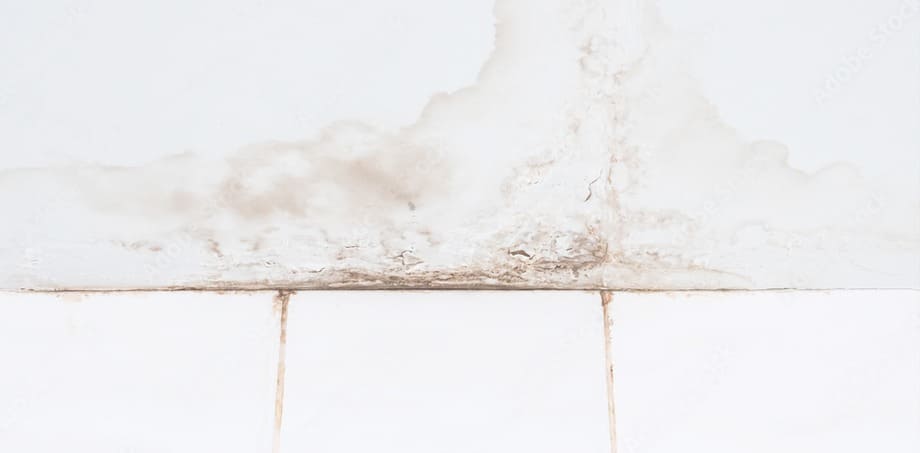

-
WHAT CAN I DO?
Attend to the water damage as soon as a problem is detected!
Water permeating through the grout and adhesive into the substrate can cause damp patches on adjacent walls or on the ceilings of rooms below the installation. There is also a risk of mould growth.
Follow these steps:1. Get a plumber in to determine if there is a leak in the pipe-work or taps:
- leakages must be repaired as soon as possible.
2. Consult a professional tiling contractor to determine if the problem is caused by:
- a lack of waterproofing
- failed waterproofing
- cracks in tile glaze
- cracked or soft grout
3. Should the wet area be tiled with porous tiles such as unglazed ceramics, or natural stones (travertine, slate, or marble), consider sealing the tiles with a suitable tile sealer.
4. Once the problems are rectified and the tiles are allowed to dry out, the dark shading will disappear.
- Porous tiles should be allowed to dry completely before being sealed.
- If you seal the tiles while they are still saturated with water, moisture could get trapped beneath the sealant, or prolong the drying-out process.
5. In extreme cases, especially if waterproofing has failed, the tiles will have to be removed and reinstalled. (See our article on How to waterproof a shower)
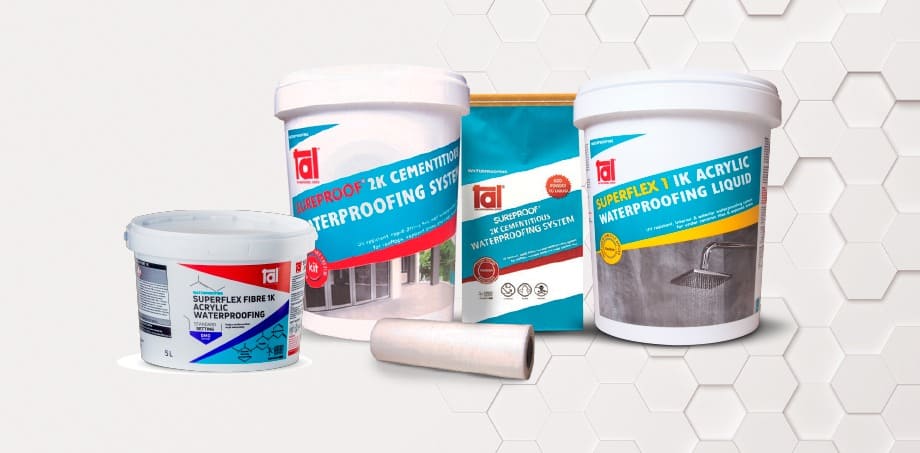

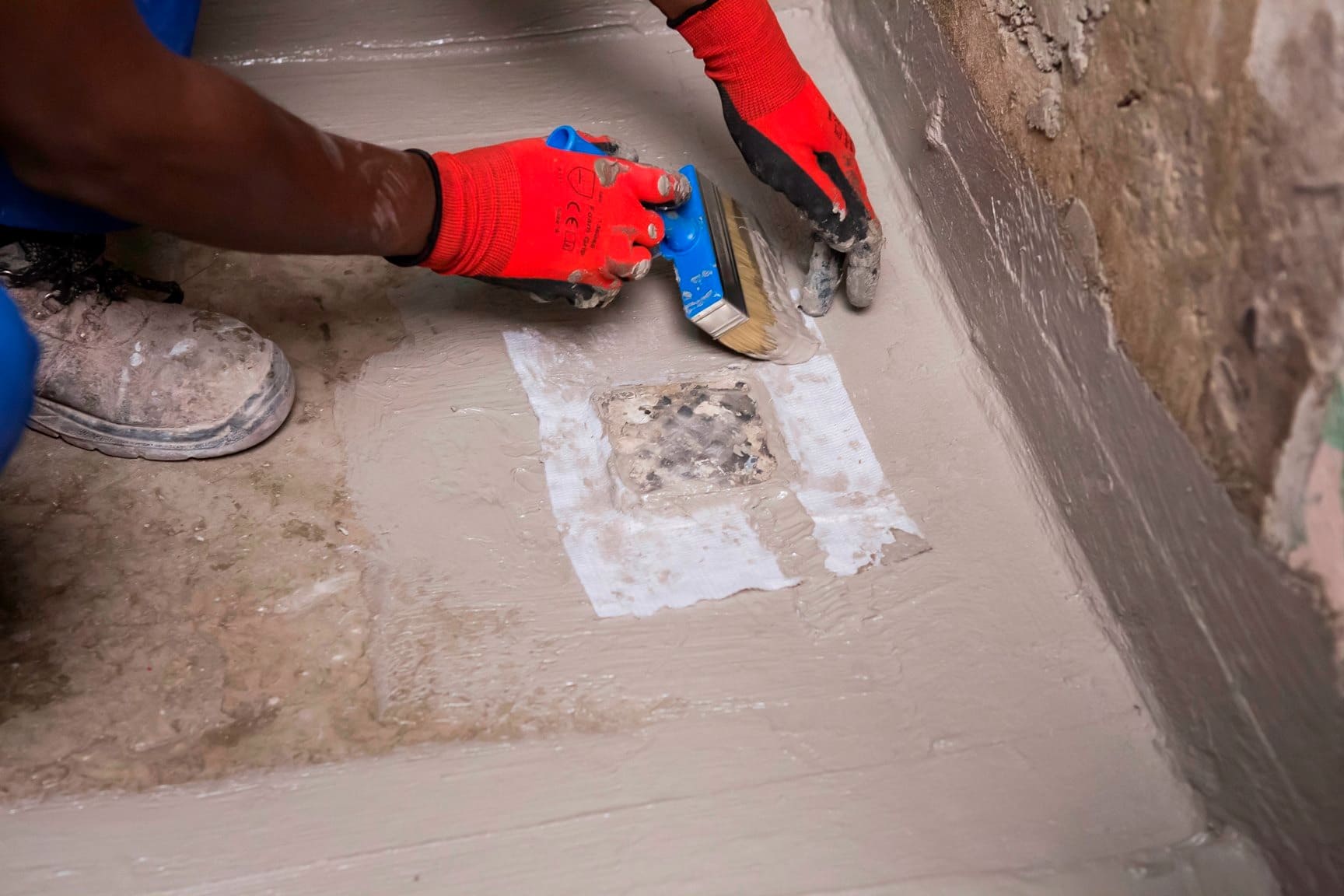

The waterproofing system needs to be applied to above the height of the shower rose and, where the wastes are flush with the floor, down into the shower waste.
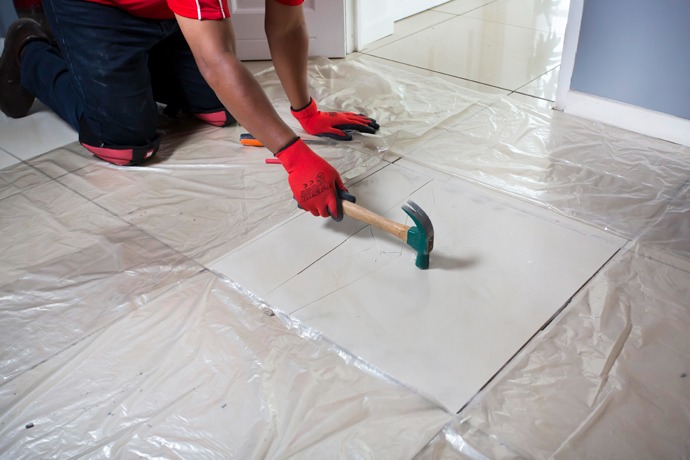



Where necessary, use a grout squeegee to apply additional adhesive to fill in any voids in the grout joints.
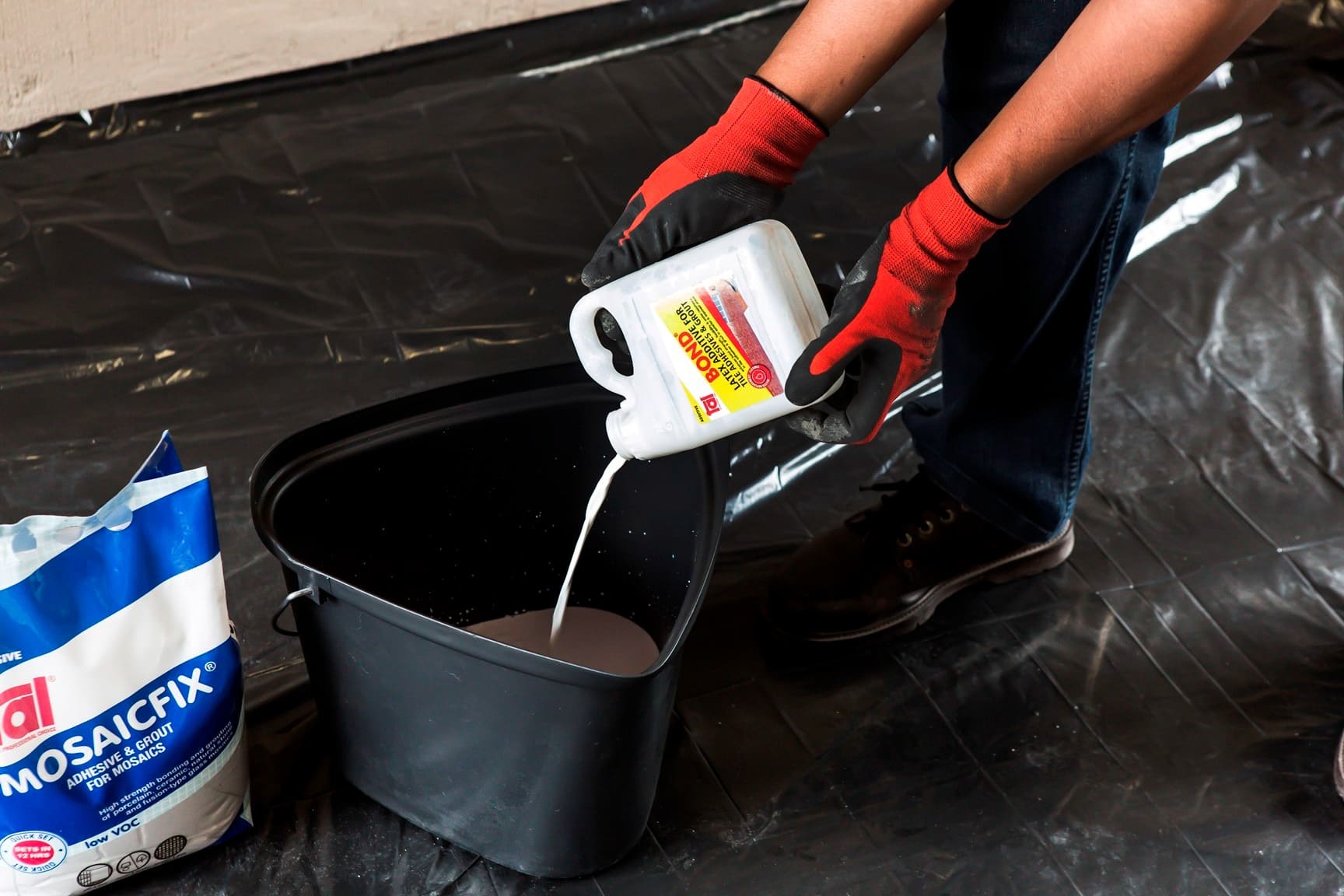

Complete the waterproofing system by replacing the water in the grout mix with TAL Bond, a latex additive, as this further increases the water resistance and flexibility of the installation.
Get the job right the first time and avoid future headaches from water seeping through and damaging the walls and floors of your home. The additional cost and effort of properly waterproofing your shower is an investment in your property and will ensure a beautiful and functional bathroom for years to come.
For more information on multi-level waterproofing systems, contact a TAL Expert on 0860 000 TAL (825), email us or watch our how-to video on YouTube for step-by-step advice on how to waterproof a shower.
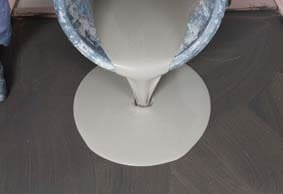

STEP 8
Roll the area using a TAL Spiked Roller to facilitate the release of any trapped air to produce a smooth surface, and to allow it to dry.
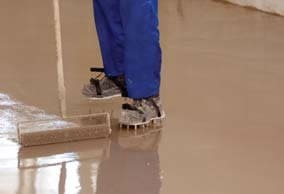

Allow the screed installation to dry for 24 hours before subjecting to foot traffic (or other trades) or installing floor coverings.


TAL MOSAICFIX is available in 20 kg and 5 kg bags from leading retail outlets.
Designed to be 100% compatible, using the TAL range of products ensures fully guaranteed multi-level tiling systems from a single source. TAL products are manufactured in South Africa to suit local climatic conditions.
If you are in any doubt, contact the TAL Technical Advisory Service on 0860 000 TAL (825), email [email protected]. Alternatively, employ the services of an experienced and skilled mosaic tiling contractor.




When replacing tiles, it is not always possible to apply the TALFIX directly to the floor, in which case apply the adhesive in a solid bed onto the back of the tile, ensuring complete coverage. Gently trace the notched side of a floor trowel through the adhesive to create ‘ridges’.


Adhesive system
When tiling onto existing tiles, it is important to only use a quick- or rapid-setting adhesive, as the existing tiles will present a dense, impervious surface, and standard-setting adhesives will take longer to dry. Too early trafficking of newly-installed tiles before the adhesive has set sufficiently can result in hollow-sounding or loose tiles.
Use TAL Tile-To-Tile quick-setting adhesive for tiling onto interior surface beds. When tiling onto suspended slabs and for external installations mix the TAL Tile-To-Tile with TAL Bond, replacing the water in the mix. Alternatively, TAL Bond Powder can be added to the adhesive mixing water.
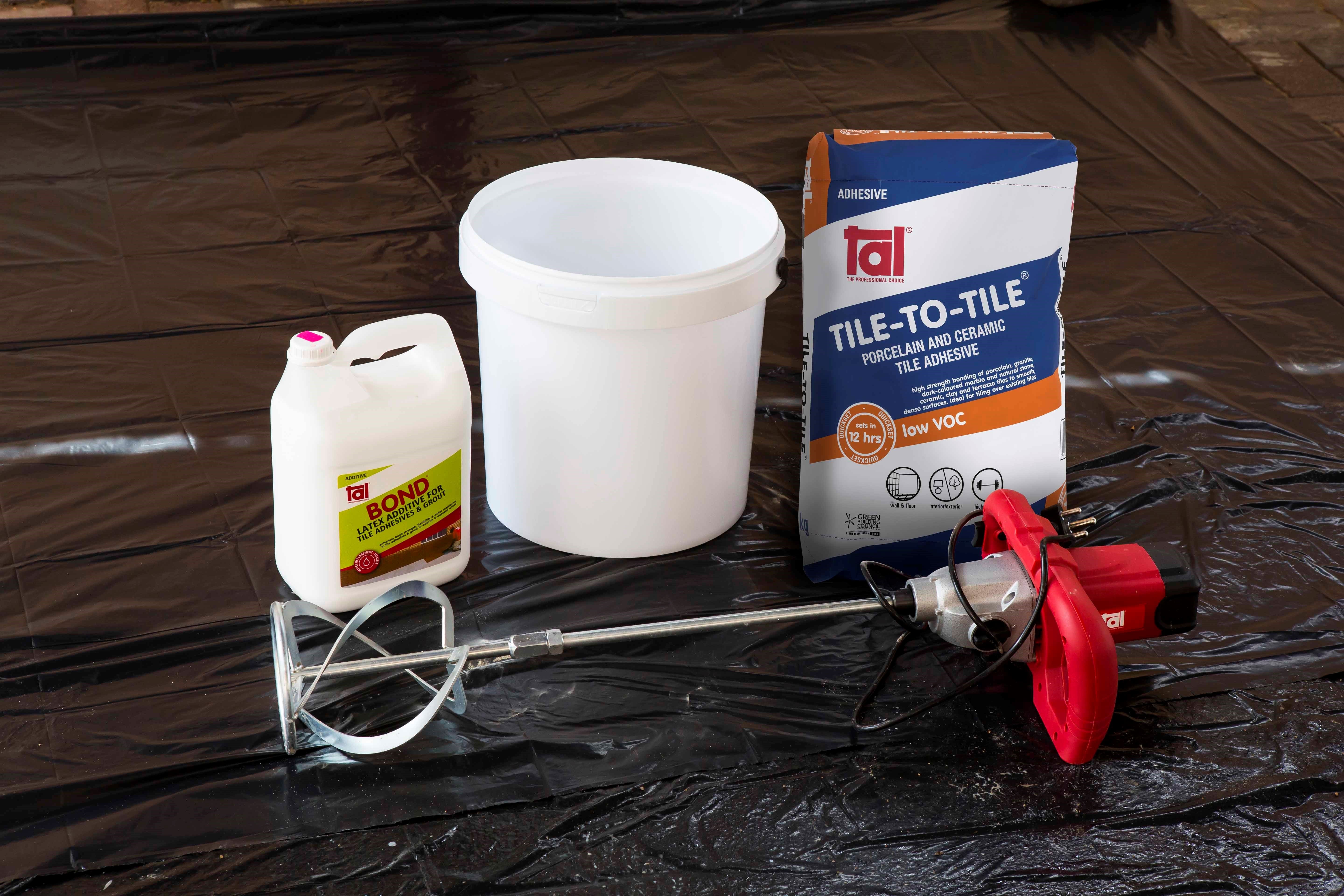

Ensure that there is a solid bed of adhesive at least 6 mm thick beneath each tile.
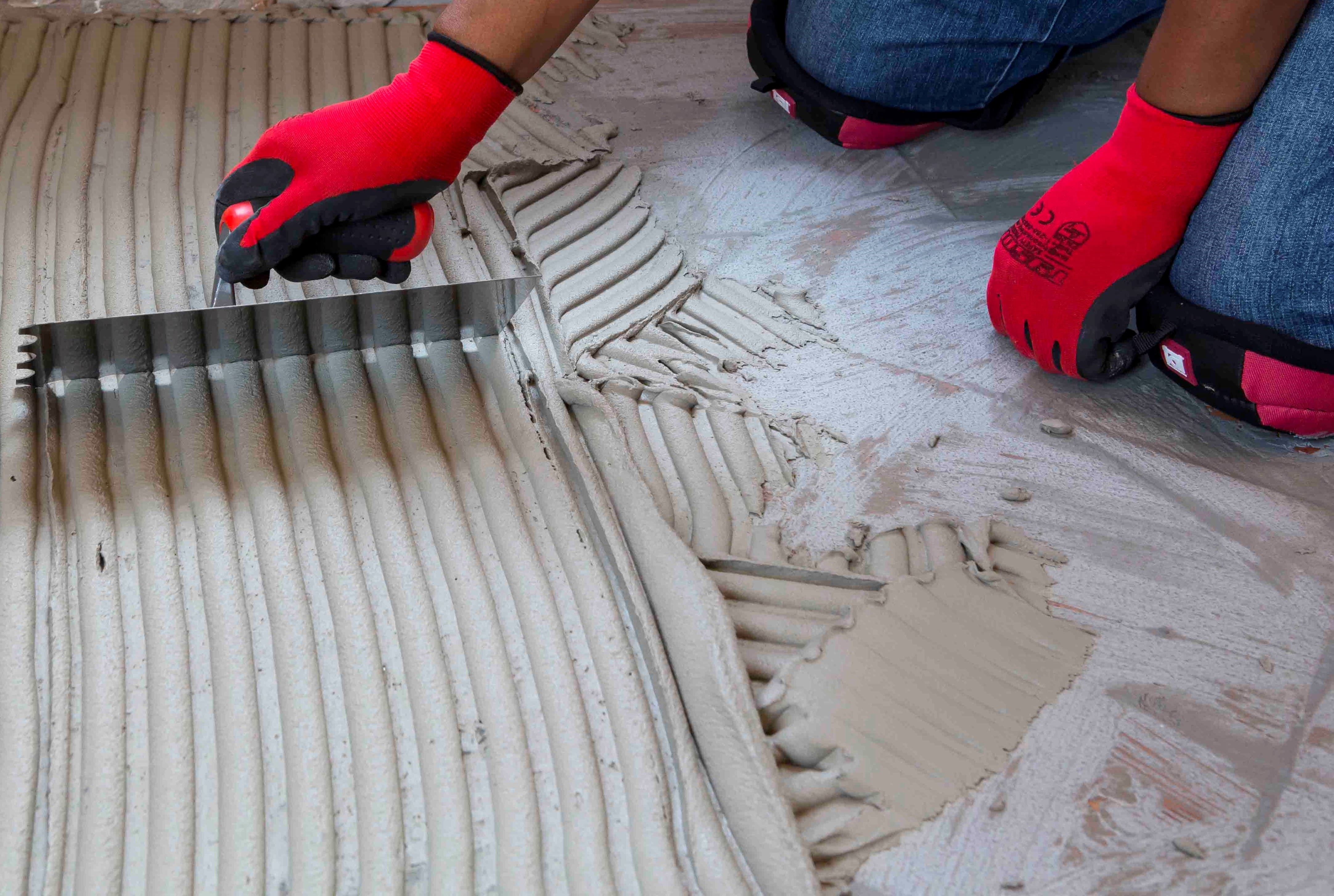

Back buttering with a thin coat of adhesive may also be required when using large-format tiles to ensure full contact with the adhesive bed.
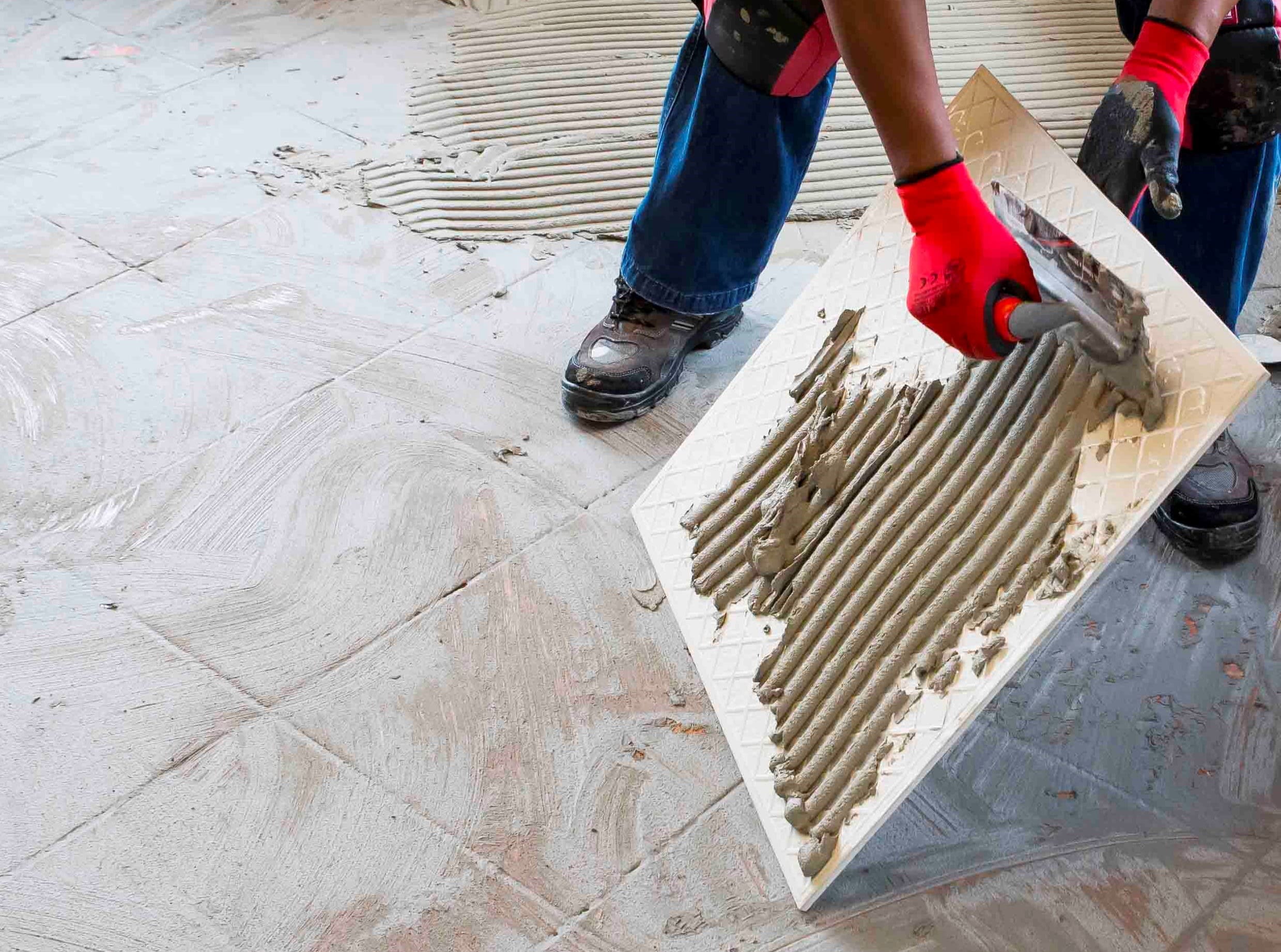

Grouting
Grouting should not be carried out until the adhesive has set sufficiently to prevent the tile installation from being disturbed during the grouting operation (always refer to the adhesive packaging for setting times). When using TAL TAL Tile-To-Tile, allow a minimum of six hours before grouting.
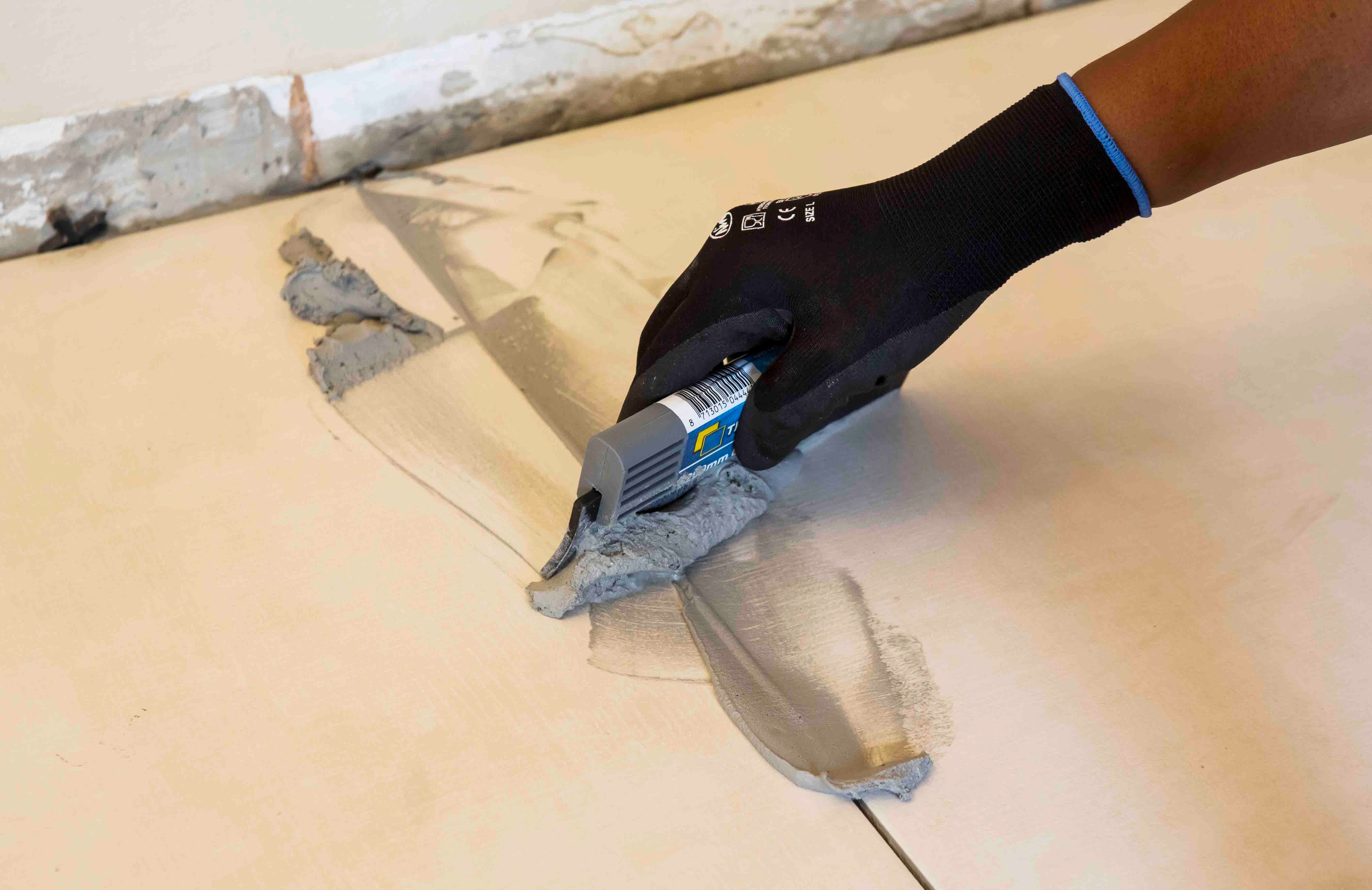

For interior surface beds, use TAL Wall & Floor Grout for filling tile joints up to 8 mm wide. TAL Quarry Grout can be used in wider joints up to 25 mm wide. On suspended slabs and for external installations, replace the water in the grout mix with TAL Bond, or add TAL Bond Powder to the grout mixing water.
Particular care must be taken to clean the grout off the tile face before it hardens completely. This is especially important when an additive such as TAL Bond or TAL Bond Powder has been used. A tile sample should be tested beforehand to ensure that no grout is absorbed through the glaze or into the tile body, thereby staining the tiles permanently.
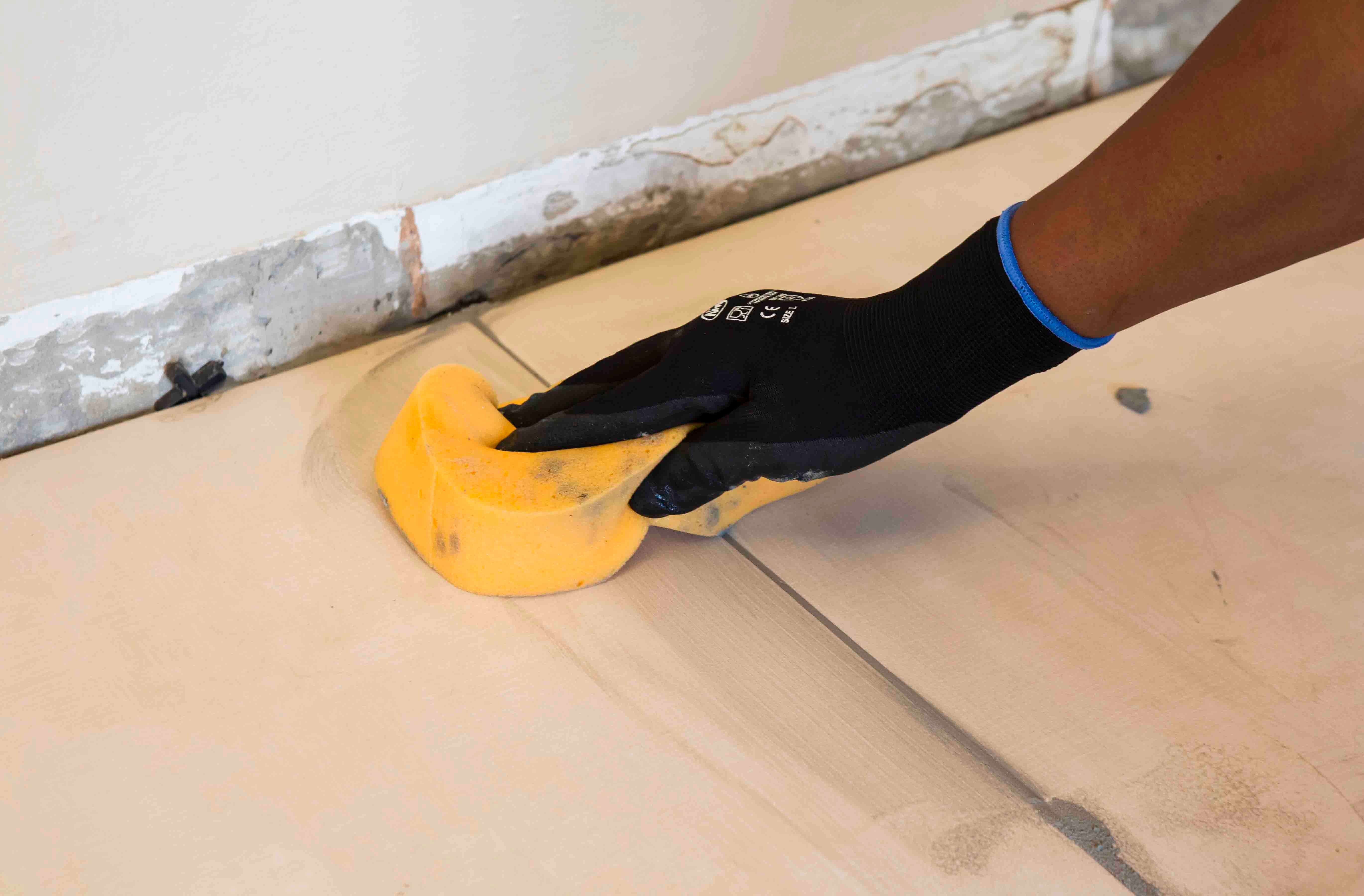

Movement joints
The lack of movement joints in tile installations is a major cause of tile failure. When tiling over existing tiles, the existing structural and movement joints must be maintained in the new tile installation. The movement joints should be at least 5 mm wide and extend through the adhesive and both tile layers.
